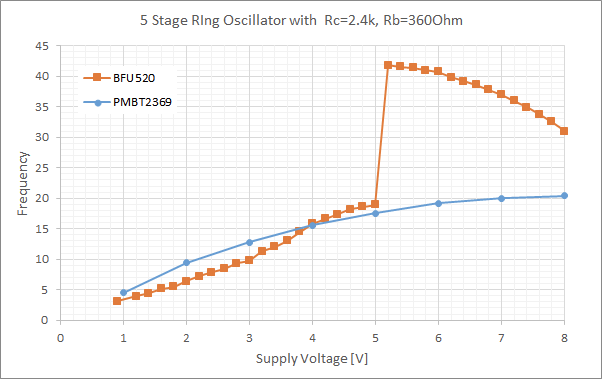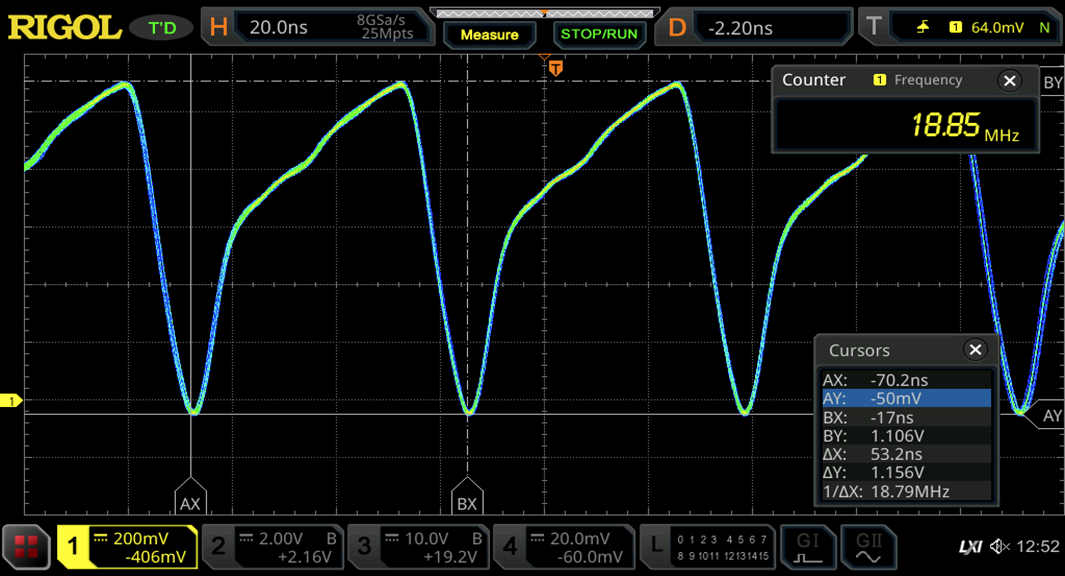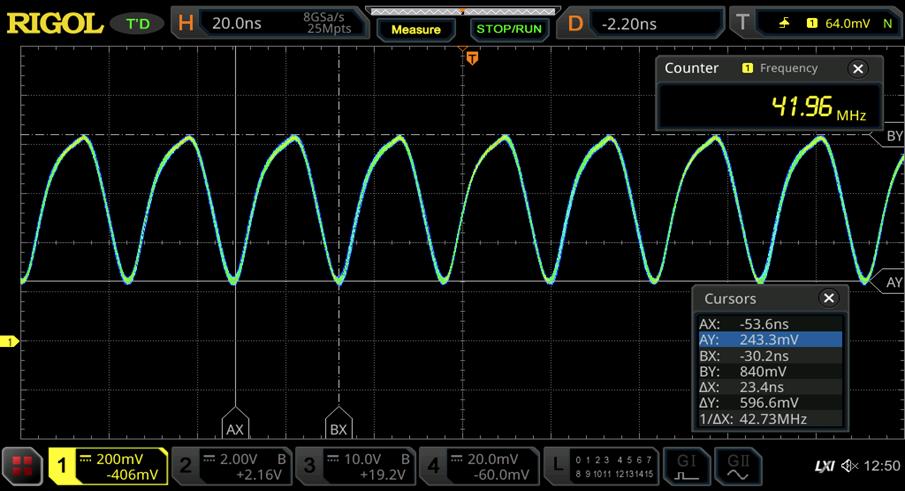So far I have mostly looked at lower cost transistors that are optimized for switching operation. The only exception was the MMBTH10, which is an older RF transistor.
Kimstik commented in this project showing simulations of ring oscillators, indicating that more mdern RF transistors may beat the trusty PMBT2369 in switching speed.
I had some BFU520 transistors left over that I purchased for some HF experiments. These are NPN silicon transistors with an ft of 11 Ghz. There are faster transistors around, but the benefit of the BFU520 is that it still allows for fairly high voltages. More modern SiGe transistors break down at below 5V. Still, the BFU520 is 10x more expensive than a PMBT2369. Maybe too much for large logic circuit, but ok for a quick ring oscillator test.
The ring oscillator PCB

Results of Voltage vs. Frequency Measurements for BFU520 and PMBT2369

The behavior of the BFU520 ringoscillator is quite curious. At low voltages it shows performance that is comparable to that of the PMBT2369. At 5V there is a sudden shift to a different oscillation frequency twice as high. (I did not record results beyond 8V, but the frequency did monotonically decrease)
What is going on? Some more details can be seen in the waveforms:
Waveform in the low frequency branch at 5V

We can see that the shape of the waveform indicates normal switching behavior of an RTL inverter. The high->low transition, when the output transistor is turned on, is very steep. The lower voltage actually reaches zero, indicating that the transistors VCE is ~0V and the transistor is in saturiation. The low->high transition is much slower as the transistor has to switch off from saturation.
Waveform in the high frequency branch at slightly above 5V

The behavior is quite different in the high frequency branch. We can see a more symmetric waveform and the voltage newer reaches zero, indicating that the transistor is not fully saturation. Indeed it is more acting as a linear amplifier in this mode and this explains the much higher frequency. Increasing the length of the ring oscillator to e.g. 9 stages would most likely eliminate this behavior as there would be enough time to transition to saturation.
Unfortunately, this operating mode is not suitable for saturation logic families such as RTL.
Discussion
The BFU520 performs quite well at switching as it is almost on par with the PMBT2369 at lower voltgage. This is most likely because some of the optimization of RF devices (thin base with drift field, small parasitics) also help optimizing the switching speed. It is unlikely that carrier lifetime engineering (gold doping) is used here, as in the PMBT2369, as this would degrade noise figure and hfe. The BFU520 is optimized for operation as a linear amplifier and this is why we see it is prone to the small-signal oscillation mode.
It's not clear whether the behavior observed above can also be seen in simuation, as the BFU520 is not among the transistors simulated by Kimstik. It is however likely that the switching behavior is not defined well in the models provided by NXP, because this is not an anticipated operating mode of the transitor, and therefore the simulation may look quite different. Note that also no switching times are provided in the datasheet.
 I believe i built enough ring oscillators for now.
I believe i built enough ring oscillators for now. Tim
Tim
Discussions
Become a Hackaday.io Member
Create an account to leave a comment. Already have an account? Log In.
no magic with bfr193 ;(
https://ibb.co/0BDM5RT
Are you sure? yes | no
Nice! Simulation or measurement?
But yeah, looks familiar :/
Are you sure? yes | no
Measurements, real ones.
Are you sure? yes | no
The gold doping is the magic ;)
Are you sure? yes | no
Nice! Contender for the lowest saturation charge among modern BJTs.
The beauty of the BFU520 is that it exist in a tiny SOT323 and even in a double package!
Are you sure? yes | no